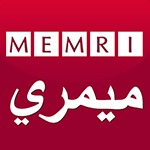Source: (check out) BBC 4’s Open Sesame – Science in the Desert with David Shukman – Available for the next year.
Peace through Science!

The Main Building in Allan, Al-Balq’a, Jordan
SESAME (Synchrotron-light for Experimental Science and Applications in the Middle East) is a “third-generation” synchrotron light source under construction in Allan (Jordan). It will be the Middle East’s first major international research centre.
It is a cooperative venture by scientists and governments of the region set up on the model of CERN (European Organization for Nuclear Research). It is being developed under the auspices of UNESCO (United Nations Educational, Scientific and Cultural Organization) following the formal approval given for this by the Organization’s Executive Board (164th session, May 2002).
What is a synchrotron light source? (cf. below)
RELATED:
Finally a TV show highlighting higher values: Stars of Science, supported by the Qatar Foundation for Education, Science, and Community Development, a private, non-profit organization that is supporting Qatar on its journey from carbon economy to knowledge economy by unlocking human potential for the benefit of not only Qatar, but the world. Founded in 1995 by His Highness Sheikh Hamad Bin Khalifa Al-Thani, Amir of Qatar, QF is chaired by Her Highness Sheikha Moza bint Nasser. [Addendum: Around the United Nations climate change conference in Doha, a Qatari court sentenced a local poet to life in prison, a move that shocked many activists in the Gulf region and human rights observers. The sentencing of Muhammad Ibn al-Dheeb al-Ajami came nearly two years after he wrote a poem titled, “Tunisian Jasmine,” supporting the uprisings in the Arab world. “We are all Tunisia in the face of repressive elites!” al-Ajami wrote. “The Arab governments and who rules them are without exception thieves, thieves!”]

Name: Aynour Tatanaki
Country: Libya
Age: 21
http://youtu.be/HW-HzI9HgzQ
A synchrotron light – or synchrotron radiation – source produces very intense pulses of light/X-rays, with wave lengths and intensities that allow detailed studies of objects ranging in size from human cells, through viruses down to atoms, with a precision that is not possible by other means. Advanced sources of light (like lasers and synchrotrons) have therefore become prime factors in promoting scientific and technological progress, and in recent decades the extraordinary power of synchrotron light has had an immense impact in fields that include archaeology, biology, chemistry, environmental science, geology, medicine and physics.The heart of a synchrotron light source is a ring of magnets (133.2m in circumference in the case of SESAME) in which electrons are stored after being accelerated to high energy. The ‘synchrotron light’ emitted by the electrons is directed towards the beamlines which surround the storage ring and are connected to it. Each beamline is designed for use with a specific technique or for a specific type of research.Electrons are relatively expensive devices which are frequently built by international collaborations. Working in collaboration has the important benefit that it disseminates the highest scientific and technical standards through the participating countries, which helps foster the development of a wide range of basic and applied science and industrial activities.Synchrotron light sources are generally ‘user facilities’. Scientists from universities and research institutes typically visit synchrotron laboratories for a week or two, two or three times a year, to carry out experiments on the beamline that corresponds to the needs of their work, frequently in collaboration with scientists from other centres/countries, and then return home to analyze the data they have obtained. These scientists bring back scientific expertise and knowledge, which they share with their colleagues and students at home.


 Laure Adler & Ses Invités/Ses sujets
Laure Adler & Ses Invités/Ses sujets MEMRI
MEMRI![Magazine d’Actualité Internationale [abonnez-vous aux podcasts!] Arte Reportage Magazine d’Actualité Internationale [abonnez-vous aux podcasts!]](https://www.arte.tv/i18n/3838018,property=data,v=1.png) Arte Reportage
Arte Reportage Frontline
Frontline Independent Lens
Independent Lens